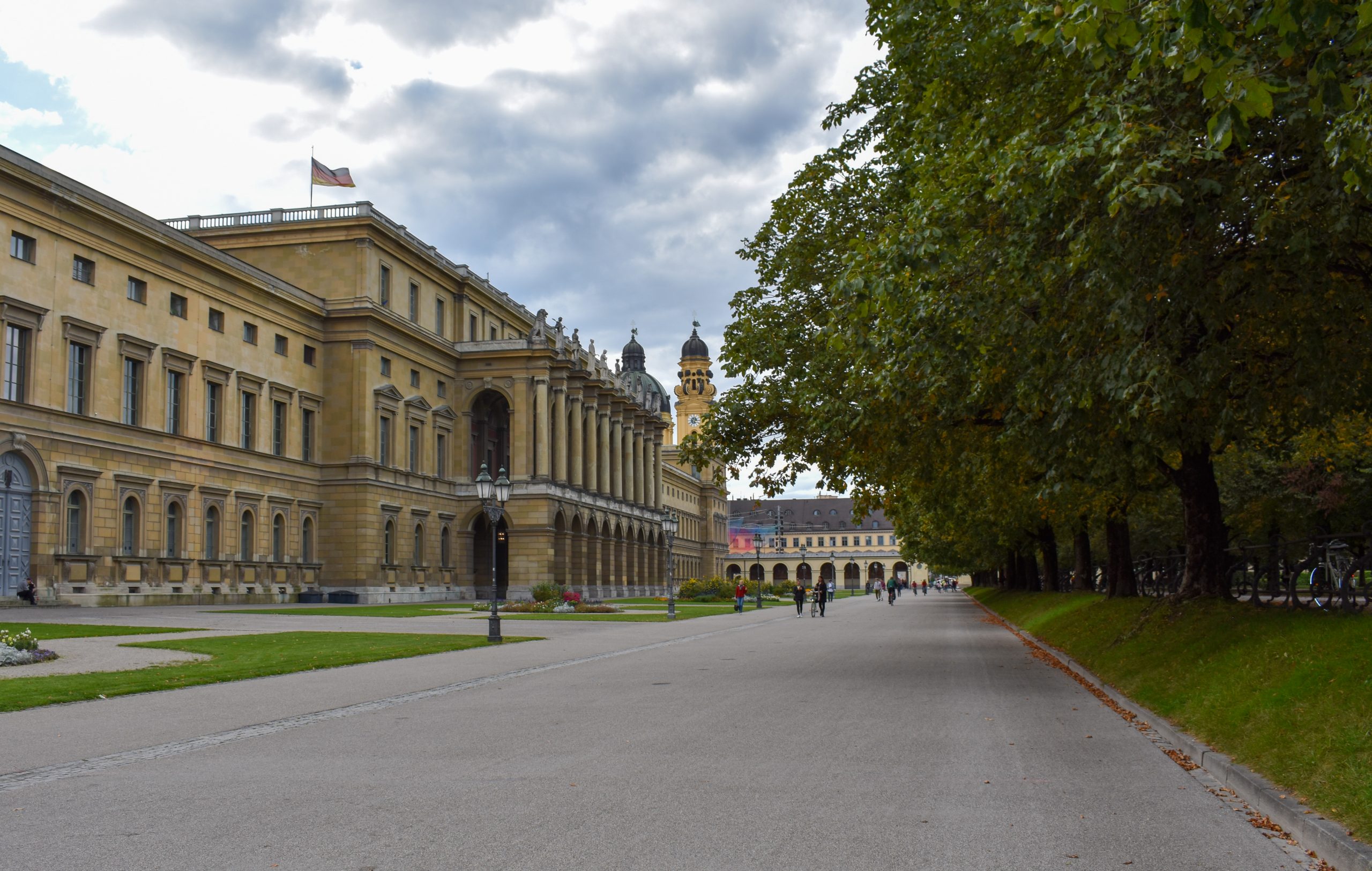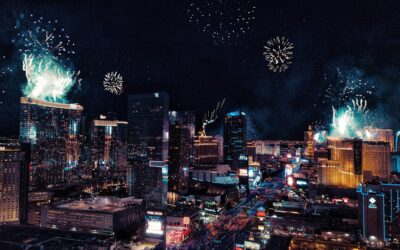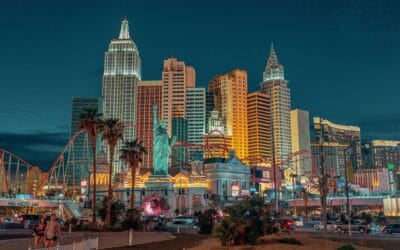This post may contain affiliate links, which means I’ll receive a commission if you purchase through my link, at no extra cost to you.
For a good reason, Munich is one of Germany’s top destinations. Not only does the city host Oktoberfest, but it has world-class beer gardens, cuisine, and exquisite architecture.
During World War II, it was clear that Munich was not going to go unscathed. The Nazis were tasked with photographing the city’s architecture and secretly removing treasured art and irreplaceable items to safer areas. In April 1945, the historic district of Munich was largely destroyed by bombings. After the war ended, a vote was held, allowing residents to choose to rebuild the city with Munich’s old-world ambiance or rebuild with modern architecture. By a close margin, the people selected to rebuild with the old-world ambiance.
Contributing to Munich’s charm is the strict regulation that was put into place during its rebuild. Buildings are not allowed to be taller than the church spires, which makes Munich feel more like a suburb than a city. Pedestrians are also given top priority with much of the town center closed to vehicles. Here are my top stops for a visit to Munich:
English Garden (Englischer Garten)

Munich’s English Garden opened in 1792 and is the largest inner-city parks in the world! The garden measures over 926 acres, making it larger than New York’s famous Central Park. It stretches from the Altstadt to the northeast city limits along the west bank of the Isar River. The park lies in the center of Munich and gives the opportunity for both locals and visitors to spot wildlife, enjoy the serene atmosphere, and take part in cultural events. The garden offers nearly 50 miles of paths, pedal boat rentals on Kleinhesseloher See Lake, yoga classes on the large grass fields, and even riding trails for horse lovers. In the southern portion of the park, you may even come across a flock of sheep.

To my shock, the English Garden is also a popular surfing spot. Waves on the Eisbach River have attracted surfers for over 40 years. A stone step generates a standing wave about 1.5 feet tall where the manmade Eisbach River emerges from underground, just a few steps away from the Haus der Kunst (art gallery) on Prinzregentenstrasse in the Lehel district. Surfers utilize this spot, known as Eisbachwelle, year-round.
The garden contains several other attractions such as:
Japanese Teahouse: Opened in 1972 to celebrate the Summer Olympics being held in Munich.
Schönfeldwiese: A large meadow that has been known since the 1960s for its nude sunbathing.
Monopteros: A hilltop temple with Greek inspiration.
Chinese Tower: A tall wooden structure that was completed in 1790. In 1944 the tower burned down after bombings in the area and it was rebuilt in 1951.
Kleinhesseloher See: A lake created around 1800, originally the site of a beer shop for workers in the park. This shop expanded to offer meals and quickly became a popular stop for visitors in the park. Today, Seehaus Restaurant and Biergarten am Kleinhesseloher See continue to offer visitors food and drink.
New Amphitheatre: Opened in 1985 and is used for open-air performances in the summer.
Price: Free
Munich Residence (Munich Residenz)

Munich Residence was the royal palace of Wittelsbach monarchs of Bavaria, a former German dynasty. It is the largest city palace in Germany and contains 10 courtyards and 130 display rooms. The palace was severely damaged during World War II and most of the rooms were reconstructed by the 1980s.
Included in this reconstruction was the shell grotto, which happens to be the first stop on the palace tour. Grottoes date back to ancient Greece when they were shrines built over sacred springs. This evolved over time to formal temples and fountains dedicated to water gods with a maritime theme. The original shell grotto was built in the 1580s but was destroyed along with much of Munich. Following the war, the economy was at rock bottom. With residents not being able to contribute monetarily, they were able to collect freshwater shells to rebuild the grotto. An exact replica was built thanks to the photographs taken before the bombings that destroyed the city.
Prices: Court Garden & Fountain Machinery Free
Residence Museum, Treasury, and Cuvilliés Theatre Combination Ticket €17
Tickets can only be purchased in person. Children under 18 are admitted for free.
Bavarian State Chancellery (Bayerische Staatskanzlei)

Although not open to the public, the Bavarian State Chancellery is a unique combination of modern and historical architecture. In World War II, the side wings were destroyed and modern glass halls were integrated into its reconstruction. In front of the building is the War Memorial honoring Bavarian soldiers who lost their lives in World War I.
Price: Free
New Town Hall (Neues Rathaus)

Located within Marienplatz is Neues Rathaus, New Town Hall, which boasts an ornate, Neo-Gothic facade. Initial construction took place between 1867 and 1905 after the original Old Town Hall, Altes Rathaus, became too small for the city council.
The famous Glockenspiel (set of bells) in the hall’s tower has daily performances that occur at 11 AM and 12 PM year-round, with 5 PM performances in the summer months. Six dancers are featured on the Glockenspiel. The dancers waltz to four different songs that change on a monthly basis. Around 9 PM each evening, the Glockenspiel plays Richard Wagner’s “Meistersinger von Nürnberg” and Johannes Brahms’ “Lullaby” to send the Münchner Kindl (Munich child), off to bed.
The Glockenspiel showcases two stories from Munich’s history. The top of the display demonstrates the marriage of Wilhelm V and Renate von Lothringen in 1568. To honor the bride and groom, a knights’ tournament was held on Marienplatz. The Glockenspiel has life-sized knights on horseback competing, with one knight representing Bavaria and the other Lothringen, a former region at the time. The Bavarian knight, of course, wins every time.
The lower level of Glockenspiel shows the Schäfflertanz, or dance of the coopers. A cooper is a trade person who makes wooden casks, barrels, vats, and other containers from timber. After the plague epidemic, the coopers are said to have been the first people to risk stepping back out into the world, dancing for the amusement of the population that was so fearful. Lastly, on top of the tower is a statue of the Münchner Kindl that watches over the city.
Tours of Neues Rathaus are offered on weekends in German only and last 90 minutes.
Price: Free to visit Marienplatz and view the Glockenspiel performances
€20 Per Person for German-only Tour
Victuals Market (Viktualienmarkt)

Within Old Town Munich, visitors will find an abundant number of mom-and-pop shops and food stands due to the government’s initiative to maintain that old-world charm. At the heart of this initiative is Victuals Market which dates back to 1807. When Munich was reconstructed after WWII, Victuals Market was revived and continues to be an important historic landmark for Munich today.
The market has about 100 stalls selling items such as fruits, vegetables, fish, meat, bread, spices, gifts, and souvenirs. With this are a large beer garden and hot meals.
Victuals Market is open Monday – Saturday from 10:30 AM – 10:00 PM
Price: Free
Make sure you have Euros on you before coming to Victuals Market because the ATM on-site charges high fees for withdrawals. I found that the Postbank Filiale banks outside of the historic district offer fee-free withdrawals.
Saint Peter’s Church (Peterskirche)
The city’s oldest parish church is located in the heart of Munich and offers visitors a 360-degree viewing platform in the tower. Within the church is a high altar with a golden figure of St. Peter and the remains of St. Munditia, a saint dating back to the year 250 who was given as a gift in the 17th century.
Prior to the creation of Saint Peter’s Church in 1158, this site was home to another church used by monks in the 8th century. In 1327 a large fire destroyed the church and was not completely rebuilt until 1368. The famous tower was added in the early 17th century.
Price: Free to enter the church
€5 Adult entry to the tower
The Church of the Holy Spirit (Heiliggeistkirche)

The Church of the Holy Spirit was founded in 1398 and is one of Munich’s oldest churches, originally a chapel and hospice belonging to the Hospice of the Holy Ghost. The church depicts the story of the hospice which was demolished in 1806 to allow for the construction of Victuals Market. The focal point of the church is the central altar, built from 1728-1730. Like much of Munich, the church was severely damaged in World War II and restored over several years.
Price: Free
Hofbräuhaus

Hofbräuhaus, built nearly 500 years ago, is considered the world’s most famous tavern with up to 35,000 visitors every day. Legend says the Duke of Bavaria, Wilhelm V Wiitelsbach, was appalled by the beer in Munich and commissioned his own brewery to solve the issue. Staatliches Hofbräuhaus was created and in 1589 the famous Hofbräuhaus building was constructed.
Hofbräuhaus produced beers exclusively for the royals until 1828 when it was opened to the public by King Ludwig I of Bavaria. The tavern has played an important role in Munich’s history, including being the meeting place of the Munich Communist Government and the National Socialist Party. The building was destroyed by bombings in 1945 and restoration work took 13 years. Today, the brewery continues to be a staple for locals who even keep their personalized beer mugs stored in Hofbräuhaus safes.
Price: Visitors can see Hofbräuhaus for free but don’t miss out on the world-class beer and food! The menu can be found here.
Nymphenburg Palace (Schloss Nymphenburg)

Nymphenburg Palace sits on an extravagant 445 acres and was built for the Bavarian royals as a summer palace in 1675, after 11 years of construction. The Bavarian Elector, Ferdinand Maria, and his wife, Henriette Adelaide of Savoy, had their first child after 10 years of marriage. Max Emanuel was born in 1662 as the heir to the throne.
Max reigned from 1680-1726 and expanded Nymphenburg Palace to its present-day size during this time. Max’s legacy is best noted by Amalienburg in Nymphenburg Park, an intricately designed hunting lodge.
Nymphenburg Palace saw changes throughout the years, with the remodeling of rooms, the addition of statues of Olympus gods within the Grand Parterre, and the transformation of the French gardens into English.
Price: Free to walk grounds
€8 for entry to the palace
Olympic Park (Olympiapark)

Olympia Park was constructed for the 1972 Summer Olympics and is enjoyed today as a one-stop recreation park with walking paths, rowing, indoor swimming, ice skating, tennis, indoor soccer, a stadium for concerts and sporting events, the Olympic Tower overlooking Munich, a beer garden, along with an aquarium. Olympic Mountain was created out of the wreckage of World War II and overlooks Olympic Lake.
Olympic Park also has several tours including walking the Olympic Stadium roof on a tent roof tour, ziplining across the Olympic Stadium, or a more laid-back self-guided Olympic Stadium tour. In addition, water sports rentals and courses are available, including paddleboard yoga.
Prices:
Grounds: Free to walk
Water Sport Rentals: Pedal Boats, Row Boats, Paddleboards, and Kayak (Single and Double) are available in ½ hour and 1-hour rentals from €10-€21
Paddleboard Yoga: 90-minute sessions on Sundays and Mondays for €39
Zipline (Flying Fox): €46
Tent Roof Tour: €45
Zipline (Flying Fox) and Tent Roof Tour Combo: €88
Stadium Entry: €3.50
Olympia Tower: €13
Sea Life Aquarium: €17 (Online Price), €21.50 In-Person
BMW Museum

Next to Olympia Park is BMW Welt and the BMW Musuem, an exhibition and museum built as a 4-cylinder structure to resemble an engine. Displayed are BMW vehicles and engines throughout the last 100 years, including Rolls Royce, Mini, and older models. The roof of BMW Welt is covered in 16,000 solar panels with enough power for over 500 apartments.
Price: BMW Welt is free while the museum cost €10 per person.
How to get around Munich
To make the most out of your visit, take advantage of public transport options. Munich has several modes of public transportation, including the U-Bahn (underground metro), S-Bahn (suburban trains and trams), and buses. Use all three modes with the same ticket, which can be bought from the blue vending machines at all metro stations and many of the bus and tram stops. Tickets are also available via the DB Navigator app, which is what I used.
A Zone Map can be found here. Keep in mind that everything within this article is within Zone M, except the airport which is in Zone 5. There are several public transportation ticket options:
Single Ticket: One trip on public transportation.
Single Strip Ticket: Ten stripes that can be used for ten single trips.
Single Day Ticket: Travel as much as you want from first use until 6 am the next day. Prices range from €8.80 to €16 from Zone M to M-6.
*Group Day Ticket: A group of 2 to 5 people can travel as much as they would like from first use until 6 am the next day. Children between 6-14 years old count as half a person. Tickets start at €17 for Zone M and go up to €29.80 for Zone M-6.
Children’s Day Ticket: Valid for one child between 6-14 years old. The entire network is included and the ticket is valid from first use until 6 am the following day.
Single CityTourCard (1-6 Days): Available for Zone M only or Zone M-6 and ranges from €13.90 for 24 hours to €66.50 for 6 days. Along with public transportation, the ticket includes discounts to more than 80 tourist attractions.
Group CityTourCard (1-6 Days): Available for Zone M only or Zone M-6 and ranges from €22.90 for 24 hours to €109.90 for 6 days. Along with public transportation, the ticket includes discounts to more than 80 tourist attractions.
Single München Card (1-5 Days): Available for Zone M only or Zone M-6 and ranges from €16.90 for 24 hours to €76.90 for 5 days. Along with public transportation, the ticket includes discounts to a handful of attractions.
Group München Card (1-5 Days): Available for Zone M only or Zone M-6 and ranges from €24.90 for 24 hours to €102.90 for 5 days. Along with public transportation, the ticket includes discounts to a handful of attractions.
AirportPLUS Ticket: This ticket is essentially the same as the Day Tickets, listed above, for Zones M-6. It cost the same as the Single Day Ticket and Group Day Ticket, however, is only valid until 6 am the next day. Because of this, I recommend getting the Day Ticket.
What do I recommend? The Group Day Ticket had everything I needed for an enjoyable time in Munich. On the first day from Munich Airport, I purchased a Zone M-5 Group Day Ticket and the following day purchased a Zone M Group Day Ticket. To review all ticket options, click here.
Where to Stay? Staying near Old Town (Altstadt) is the best option but can be pricey depending on the time of year. Munich is an extremely safe city, so even if you have to stay outside of Altstadt, you will still enjoy your time.
Map of Stops
myVEGAS Rewards Comp Calendars (August- December 2025)
Check out the 2025 myVegas Hotel Comp Calendars for Mandalay Bay, Luxor, Park MGM, MGM Grand, Excalibur, and New York New York, Bellagio, and Aria
Access to 360+ Gardens Across North America: American Horticultural Society Membership (2025)
Discover the wonders of nature through the American Horticultural Society’s (AHS) Reciprocal Admissions Program Membership, offering exclusive access to a remarkable network of over 360 gardens across North America, including 317 paid gardens with complimentary entry.
myVEGAS Rewards Comp Calendars (January – July 2025)
Check out the 2025 January – July myVegas Hotel Comp Calendars for Mandalay Bay, Luxor, Park MGM, MGM Grand, Excalibur, and New York New York, Bellagio, and Aria





It seems like there is something fun for everyone to see and do in Munich Germany. I particularly like the surfing spot in the English Garden. The BMW museum looks like a must-see. The intricate design details of the church are mesmerizing. I have never been to Germany but may consider it now that I have read your blog. Thank you for sharing your travel experiences.
Just in time! Today I have been planning my trip to Munich and found this informative article the best so far.
Munich looks so beautiful! I can’t believe there’s a little surfing spot there. So interesting!
Such a great guide, Happy that I visited Munich this autumn.
English Garden is awesome.. I would love to explore more..
Can’t wait to visit Munich. Thank you for creating this helpful guide!
So beautiful! I’d love to visit!
This blog post is actually really helpful. We are travelling to Munich over the holidays and I have been looking for a comprehensive list of things to do. I can’t wait to visit Munich and I really appreciate this guide!